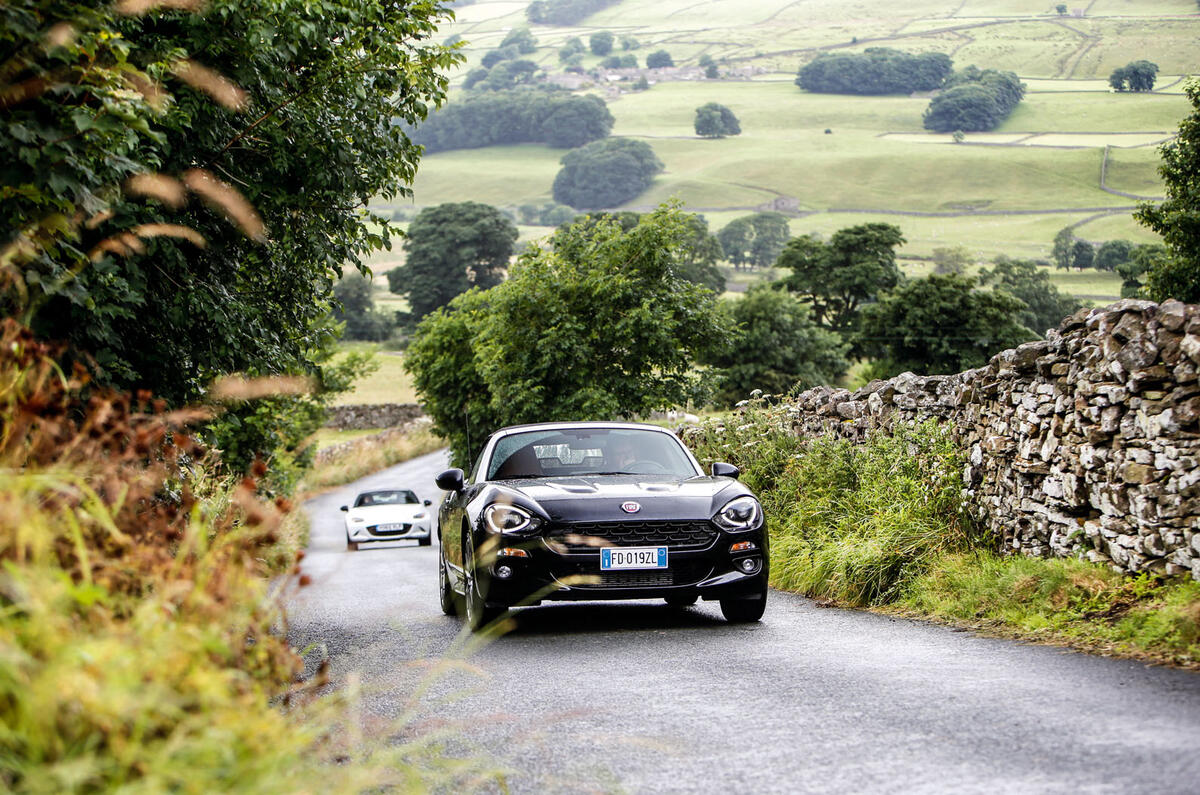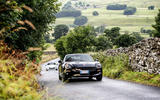The Mazda Mazda MX-5 proved brilliant in our first attempt to find the best sub-£25,000 track day car, where we tested our shortlist on the track. Now, we take them onto some UK roads to see how they fare.
On the track, the Fiat 124 Spider, for several reasons, wasn’t so brilliant. And the surprise ‘hot mover’ – as Radio 1’s Mark Goodier might have described it had it been a record rather than a car and committed to CD in about 1990 – was the DS 3 Performance, which threatened to bonfire the bookies’ odds with a typically Gallic irreverence for the expected order of things.
But we’re only halfway there. Next we head out onto the road, surely the natural environment of the affordable performance machine. Here, a good car proves its worth by brightening the grimmest and greyest of days, while a troubled one that perhaps hasn’t set your world alight elsewhere gets a second chance to impress.
And so three hot hatchbacks and two rear-wheel-drive roadsters negotiate the tangled mess of motorways between where the rivers Trent and Ouse become the gigantic Humber and where the A1M escapes to the north of Leeds and York. Thereafter, the scenery takes a turn for the dramatic: turn right for the stark, empty beauty of the North York Moors or left for the slightly less empty but no less wonderful Yorkshire Dales. No other county in the UK offers such a variety of roads on which to immerse yourself in the talents of a car gifted with the capacity to write excitement large upon them.
We’ve already opted to turn left – to overnight in Harrogate, breakfast early and then complete the final 60 miles or so into the Dales, to rendezvous at the convergence of some favourite roads we know to be as interesting on the camera lens as they are magnificent when filtered through a fine chassis. Here, whatever fillips and foibles these five cars have in store for us can be drawn out, cultivated, classified, confirmed, debated, debunked, decried and celebrated. There may also be occasion for pre-packaged sandwiches, Jaffa Cakes and the odd bit of puerile humour.

































Join the debate
Add your comment
Can't really believe Fiat has
Sam notts
Totally agree, where's a ground up punto. Think the 500 is a little over milked now. They need to move on. Yes there's the new Tipo but that is so grey slacks & a tartan flask it's scary.